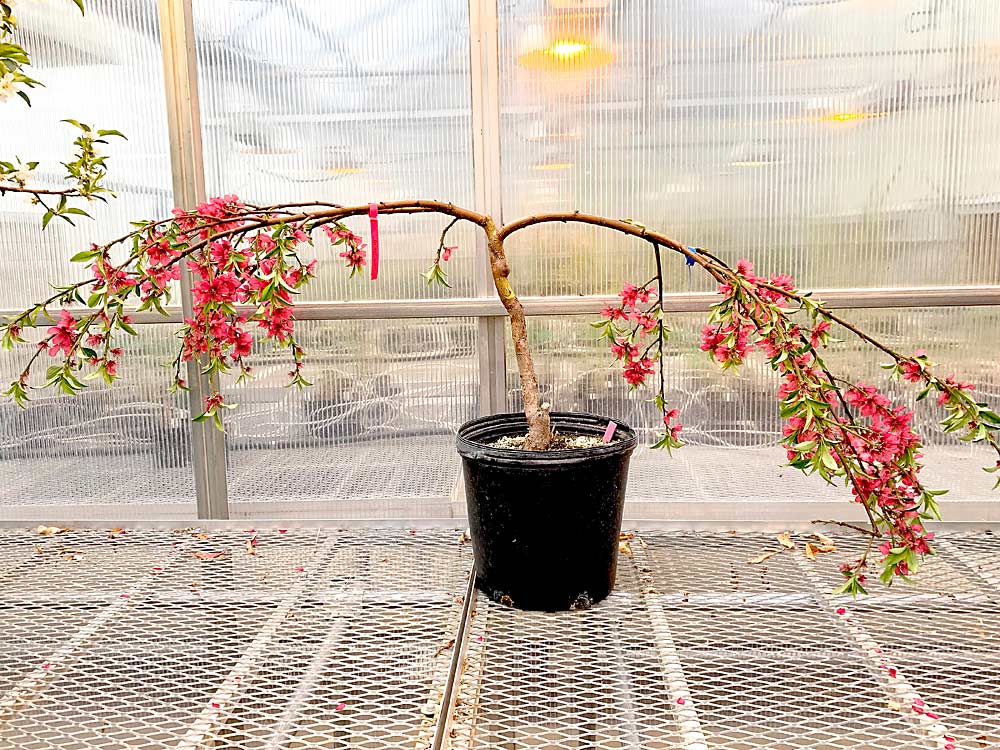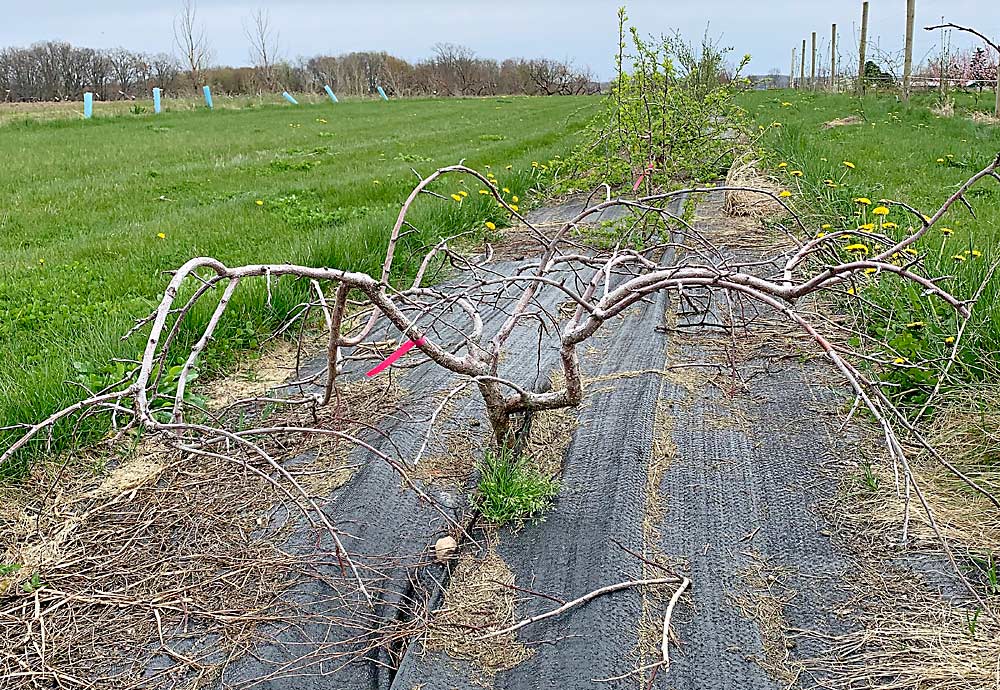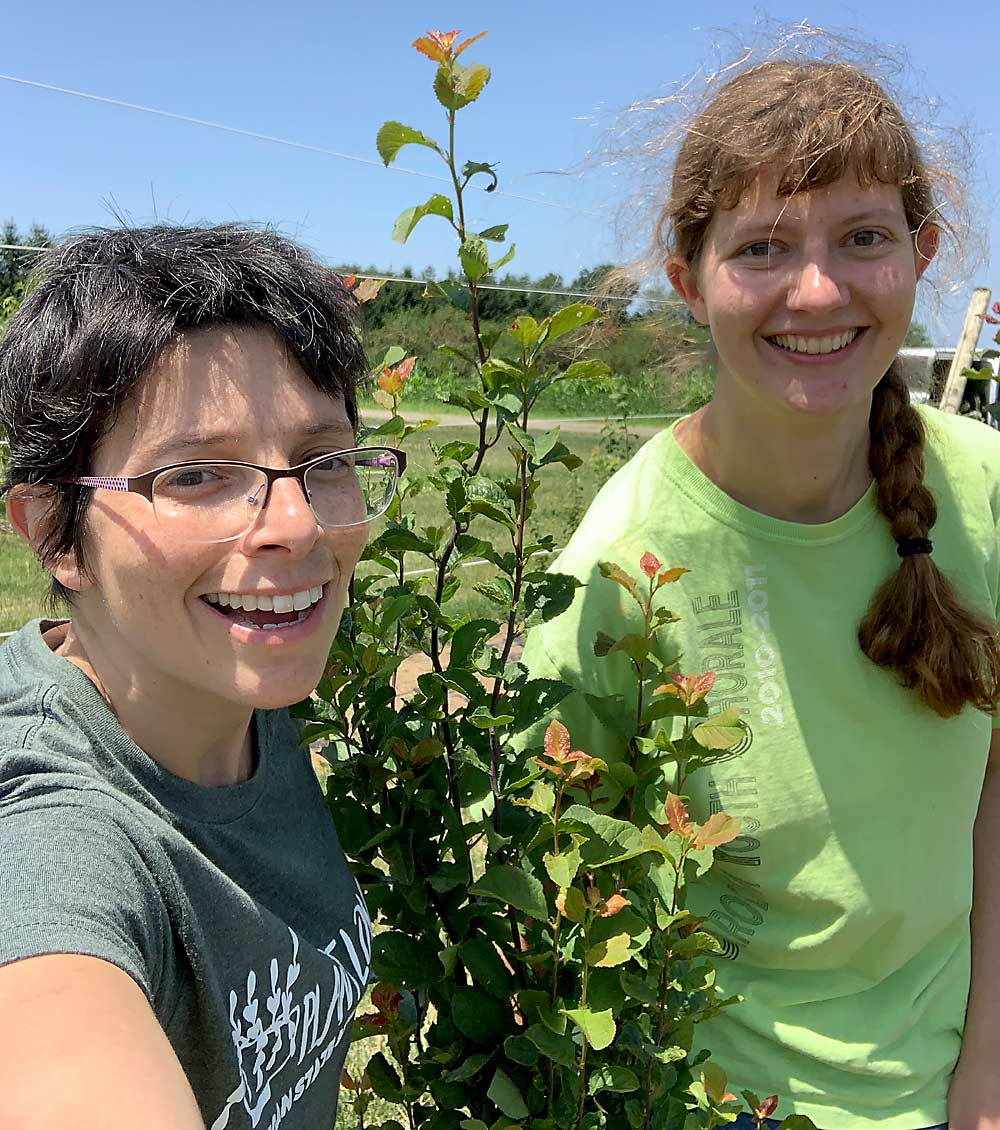
Trees have a predetermined tendency to look a certain way. A better understanding of the genetics behind that predetermined fruit tree architecture could aid growers in their never-ending quest for reduced costs, enhanced efficiency and increased fruit quality.
Courtney Hollender, an assistant professor at Michigan State University, studies fruit tree architecture at the genetic level. She’s mainly studying scion architecture, but also scion and rootstock interactions. Her ultimate goal: find high-density, two-dimensional fruiting wall systems that work for each tree fruit species grown in Michigan.
“If you can understand the whole picture, you can get plants to look the way you want them to with minimal input,” she said.
In a plot at MSU’s Clarksville Research Center, Hollender and a team of research assistants have planted hundreds of trees — a mix of peach, plum and apple — that have some rather unusual shapes. Many of the trees originated from USDA and Cornell University collections. Some have wide-angled branches, some narrow-angled. Some are weeping, some columnar. Some spread out, some curl in. Some branches are barely off the ground.
Hollender aims to answer several questions: Which genes regulate their architecture? Why do some branches reach for the light while others droop? What role does a tree’s environment play? How can tree shapes and branch angles be manipulated through cultural practices? Can nonstandard architectures make better fruiting wall systems than standard architectures?

Hollender has crop-specific goals for the project. Plums aren’t common in Michigan. High-density peaches barely exist. High-density apples are plentiful but expensive to grow. A better understanding of tree architecture could help advance all of those crops.
Her lab also is propagating tart and sweet cherry varieties in tissue culture, as well as cherry rootstock, in anticipation of future work with those species.
“If you can find a way to make a cheap, easy, two-dimensional tart cherry system, you can have a lot more automation, and maybe can help keep growers in business in Michigan despite the weather and pathogen problems,” she said.
Hollender is closely studying the LAZY1 gene, which regulates lateral shoot and branch orientations in many plants. LAZY1 promotes more upward branch orientations, narrowing branch angles in response to how the plant senses gravity. Light also likely plays a role, but many of the details of its function at the molecular level aren’t known.
Unlike most trees, when LAZY1 plants have their main shoot headed, the new branches that emerge do not grow upward and take the place of the leader. Hollender also discovered that when buds from these trees are grafted onto standard rootstocks, the emerging shoots grow horizontally, never vertically. She wants to test whether a rootstock with buds from a LAZY1 tree would require less pruning and training.
Identifying other key genes and proteins involved in regulating branch angles could give researchers a better idea of how to manipulate branch angles, she said, potentially leading to the development of simple and inexpensive cultural practices.

Hollender, who earned her doctorate in cell biology and molecular genetics from the University of Maryland, joined MSU in 2016. She came from the U.S. Department of Agriculture’s Appalachian Fruit Research Laboratory in West Virginia, where she studied the genetics of peach and plum trees with peach breeder Ralph Scorza and geneticist Chris Dardick.
Her architecture project touches on other tree fruit research being done at MSU. Peach breeder Bill Shane helps her propagate trees, and horticultural professor Greg Lang works with her on tree training strategies.

Lang said his work with Hollender examines how fruit trees with various genes for unusual branching and growth traits respond to canopy manipulation strategies. They want to find out how easily horticultural techniques could be applied to different branching habits and orientations and what the tree responses might be in terms of light interception, flower bud formation and leaf-to-fruit ratios.
If there is an optimized integration of specific branch developmental genes and horticultural techniques that can advance things such as grower yields, fruit quality, technology adoption and improved labor efficiencies, they want to find it.
“We are just entering the project phase that will start to yield some of these answers,” Lang said. •
—by Matt Milkovich
Related:
—Calling out the codes in the trees






Leave A Comment